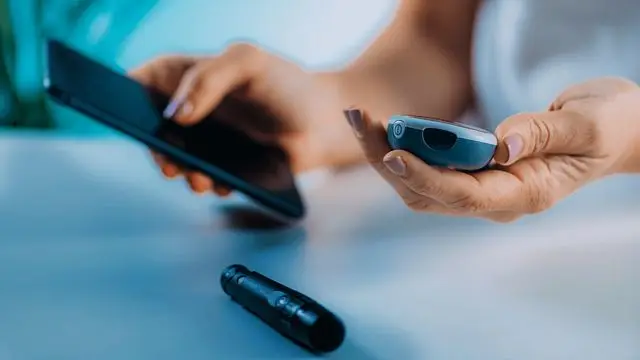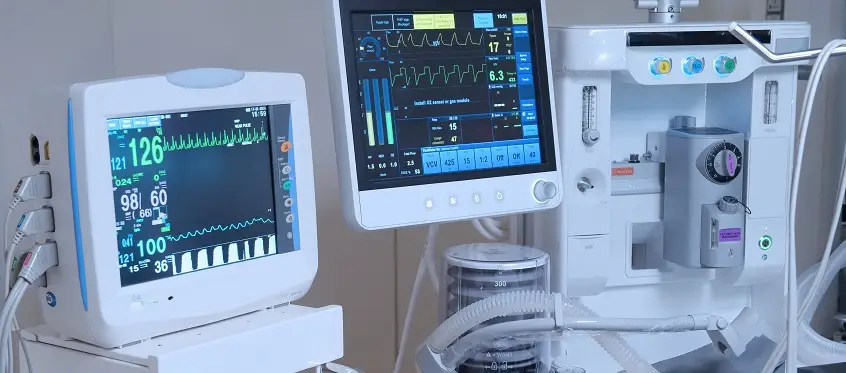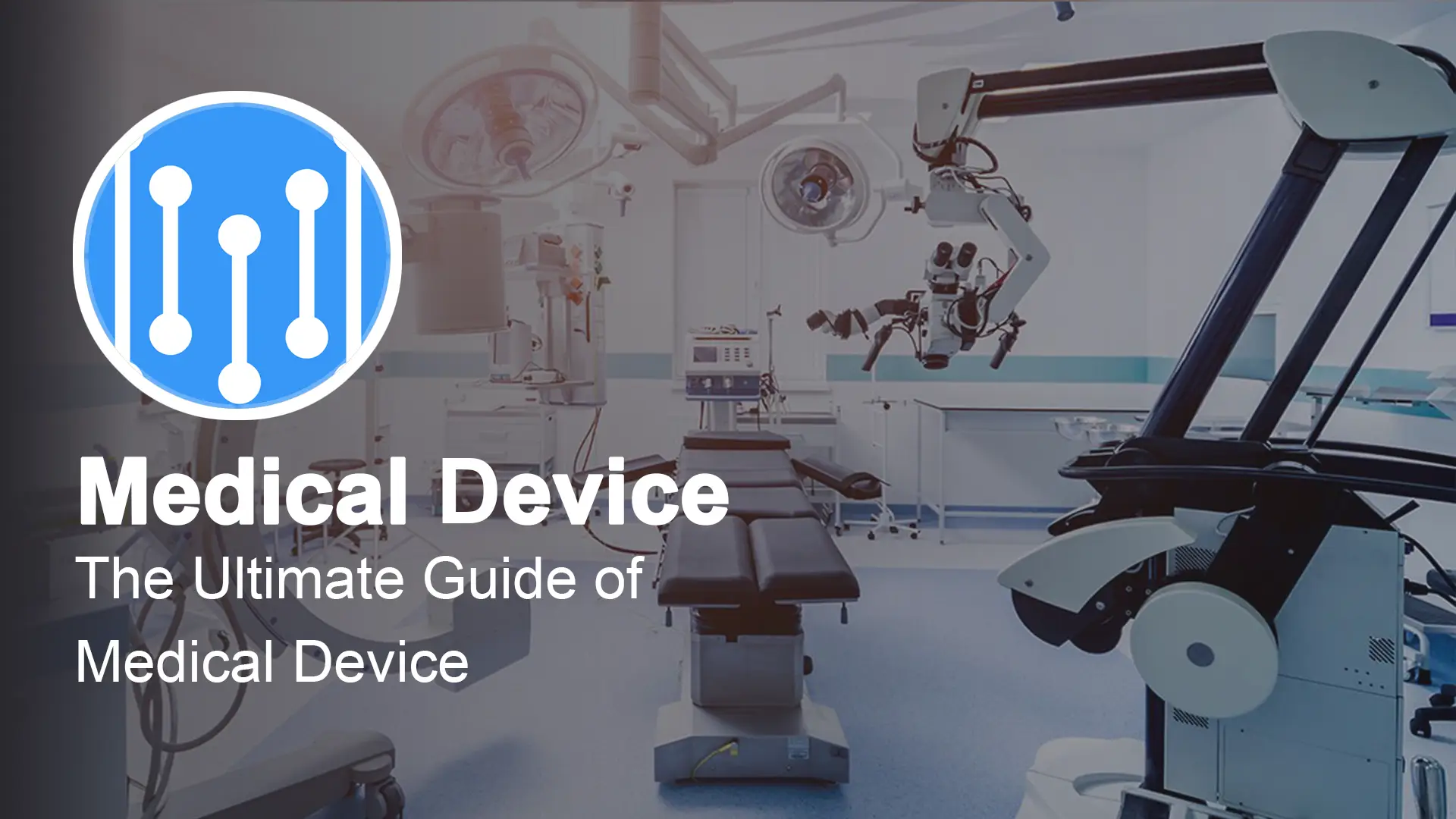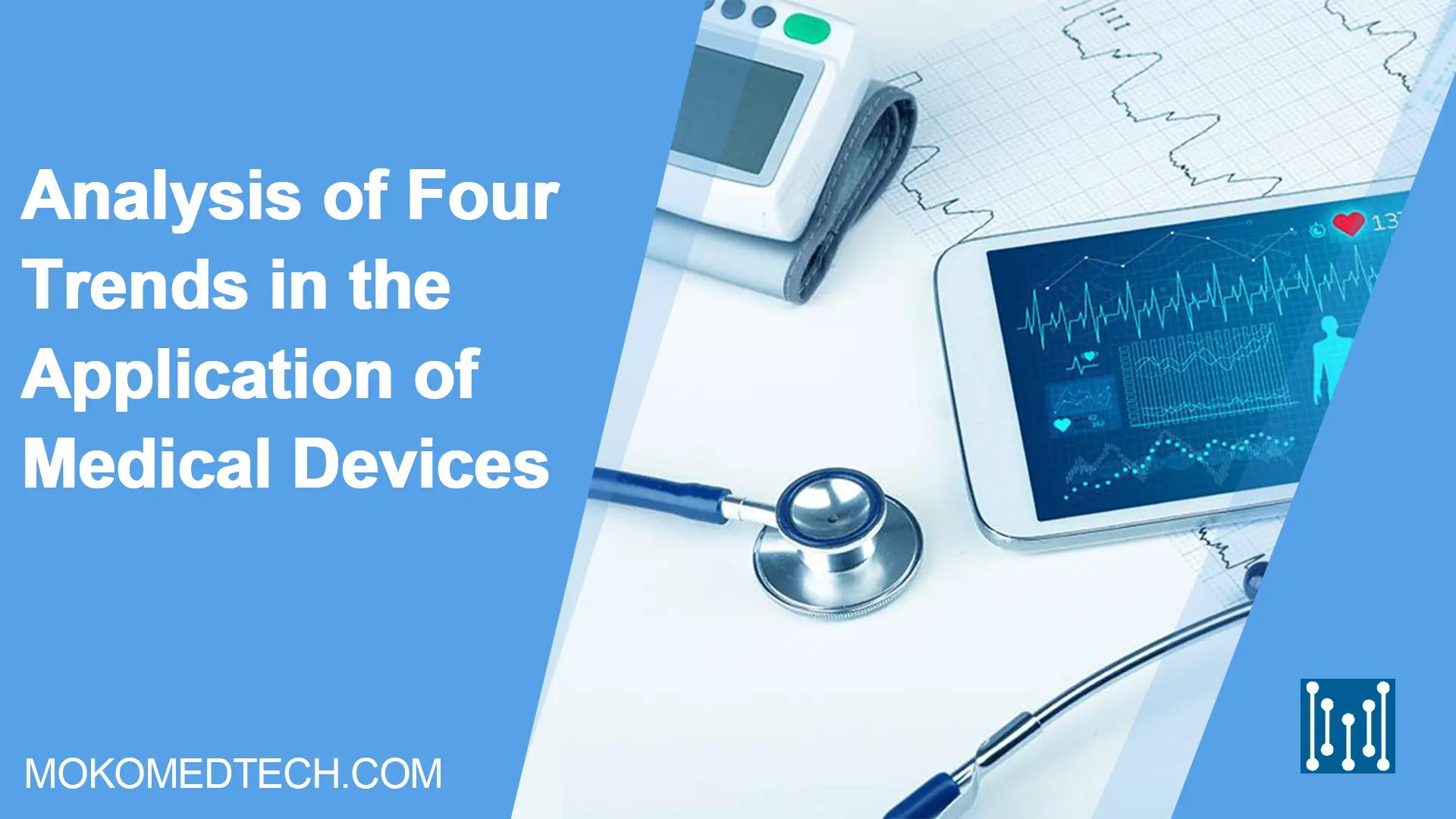At present, there are four major trends in the field of medical device – security, portability, interconnection, and low power consumption.
Safety includes two aspects: first, whether the quality and safety of medical equipment will have a negative impact on human health; second, the safety of data in medical equipment. Because of the particularity of medical equipment directly related to human health, the quality of equipment must be put first when developing a new product.
The popularization of Internet technology and product miniaturization can greatly reduce the transportation cost and time cost of patients and hospitals, improve the efficiency of diagnosis and treatment, make better use of the limited resources of medical institutions, and better protect people’s life and health. Therefore, the portability and interconnection of medical equipment has become an inevitable trend, and mobile medicine has begun to enter a stage of explosive development.
For medical devices, especially portable devices, lower power consumption means higher energy efficiency and longer service life. The pursuit of low power consumption is an inevitable trend of medical device and one of the important technical goals of all medical device related companies.
In view of the above, we interviewed some well-known enterprises and industry experts at home and abroad to discuss the current situation and future of medical device.
The Local Strength in The Portable Field is Getting Stronger
In recent years, China’s portable medical device market has developed rapidly driven by demand growth. From 2007 to 2010, the growth rate of market size remained above 23%. Especially in 2010, China’s portable medical device market reached 20.87 billion yuan, up 28.5% year on year. Among them, the household portable medical device products occupy more than half of the overall market with an absolute leading edge. In 2010, with the gradual implementation of medical reform, the growth rate and growth rate of medical portable electronic products have surpassed that of household medical device products, thus becoming an important driving force for the overall market development. In 2010, China’s sales of medical portable medical device equipment reached 7.19 billion yuan, with a market share of 34.4%.
With the improvement of Chinese residents’ health awareness and the increasing ability of medical expenditure, the demand for household portable medical device products from the huge population in the Chinese market is further released. Due to the consumer characteristics of household portable products, users have a high brand viscosity. Foreign manufacturers represented by Omron, Johnson&Johnson, Siemens, Roche, etc. have a leading edge in this market. However, it cannot be ignored that Shenzhen Mindray has occupied more than 30% of the market share of China’s medical portable medical device market by virtue of its leading advantages in multi parameter monitors, portable ultrasonic diagnostic devices and other products. Under its good demonstration role, more and more local manufacturers are gradually establishing their market position, boosted by their own R&D strength, product performance and good channel and geographical advantages. In addition, with the rise of the rural market, the competitive advantages of local enterprises that better meet the needs of this market segment are more prominent.
Positioning is The Way Out
If medical equipment manufacturers want to enter the market and maintain long-term growth, so as to continuously increase market share, they usually need to pay attention to two aspects: one is to have core technology, the other is to have good market strategies and marketing channels. Both should keep pace with the times and innovate constantly. With the technological progress of China’s small and medium-sized medical equipment suppliers, they will compete with domestic leading equipment suppliers to gain more global market share from foreign competitors. At the same time, medical equipment manufacturers need to improve their market forward-looking judgment ability and be able to invest and reserve early. For local enterprises, if they enter this market and fail to seize the market segment potential and properly position their products, they will be difficult to be invincible in the market.
The growth rate of medical device in China is far higher than the world average. In the future, it will continue to maintain rapid growth, and the related medical policies and the increasingly valued personal/family medical market will continue to promote the development of the entire industry. New medical equipment manufacturers will also emerge one after another. One of the driving forces is the technological progress of some emerging medical device applications and the hard demand of the market. Of course, compared with transnational giants, Chinese local enterprises still have a long way to go, including technology reserve and promotion, brand establishment and market expansion. At present, local medical equipment manufacturers have gradually developed products in the direction of middle and high-end, such as high-end color ultrasound, multi-slice CT and high-end monitoring products. We have all seen local brands close to the highest technical level and product performance in the industry. However, these successes are not the result of blind imitation of technology. Instead, these enterprises can find their own technological advantages and characteristics and develop products with competitive advantages in technology and performance for specific market segments. Especially for the low-end market, innovation in technology, product positioning and market strategy is also crucial. Single low-cost is no longer the only magic weapon to win the market.
Increasing Performance and Portability Requirements

Medical device equipment requires a very high resolution analog to digital converter (ADC). These devices must have very low noise, which is reflected by their signal to noise ratio (SNR) and total harmonic distortion (THD). In addition, medical professionals also hope to quickly obtain test results and improve the portability of medical instruments, which requires such ADC to have higher speed, smaller packaging and significantly reduced power consumption. For example, LTC2379-18 is an example of this new ADC. It is an 18 bit resolution, 1.6 Msps, low power ADC. The device achieves 101dB SNR and – 120dB THD, while only 18mW power is consumed.
Of course, it is difficult to achieve such high performance in the instrument, because it is limited by the amplifier used to connect the sensor and ADC. In order to make the overall design easier, LINLITTE has developed an innovative technology called “Digital Gain Compression (DGC)“. This function is used to change the zero scale code from 0V to 0.1 • VREF and the full scale code from VREF to 0.9 • VREF. For a typical 5V reference voltage, the input range will be 0.5V to 4.5V, which provides enough space for the drive amplifier to be powered from a single 5V power supply. The DGC function allows ADC to generate all codes including zero scale and full scale. These designs solve some inherent problems of the traditional high-resolution SAR ADC signal link, reduce the power consumption, and reduce the output swing requirements of the ADC driver amplifier.
Innovation and Obstacles of Local Medical Device Manufacturers
Medical device is a complex and fragmented market. Although this field has huge growth and innovation potential, the market continues to be constrained by increasing global challenges in terms of capital, regulations and supply chain optimization.
Although there are various problems, and the Chinese market entered this industry relatively late, with the enhancement of national health awareness, there has been new growth. It is predicted that in the next five years, the world medical device market will grow at an average annual rate of 9%, reaching US $243.2 billion by 2016, while the development and growth of the Chinese market will double, with a compound annual growth rate of 15%.
The key factors for Chinese medical device manufacturer to enter the high-end medical equipment market are technological innovation (such as medical imaging equipment) and highly reliable product design.
In general, from the perspective of hardware, Chinese medical device manufacturers should continue to strive for further miniaturization (small size), low power consumption (thus extending battery life), portability, wireless function, reliability, customization and personalization. In terms of software and services, there are two key points: first, the top priority is to deal with the emerging security challenges; Secondly, solving the security problem can establish a clear competitive advantage.
Due to the special requirements for safety of medical devices, it is not surprising that many technological innovations in the medical device industry are hindered by regulations and compliance. Nevertheless, medical equipment manufacturers should attach importance to risk management and create safe and effective medical equipment for the market. Having a reliable risk management method and using tools and training to eliminate risks in product design, development and safety to reduce risks are critical for equipment to gain market acceptance. Software and service providers need to invest in processes and compliance to help alleviate the problems of medical device manufacturers – which means having a reliable software development process and being able to provide traceability and artifacts for the software products they provide. In a word, to become a trustworthy manufacturer in the medical industry, we must strictly abide by government regulations and maintain reliable compliance.
Improve Safety and Reliability
For medical device equipment, there is no more important indicator than safety and reliability.
TI recently launched a new Hercules secure MCU platform for medical applications. The platform adopts the dual ARM Cortex-R4F core “dual core lock step” technology, which reduces the generation of errors by comparing CPU data cycle by cycle. On the one hand, it can eliminate errors generated inside MCU, and on the other hand, it can eliminate random errors caused by external interference. Hercules platform also adopts the Error Code Correct (ECC) function, which can automatically detect data errors in memory and improve the reliability of data. Hercules can use hardware to achieve protection functions, improve performance and reliability, reduce investment in security during software development, reduce development costs, shorten development time, and further reduce the CPU usage of programs to improve operating efficiency. The development tools, software and support services provided by Hercules can help developers work quickly, simplify the development process and accelerate the security certification process.
Win Win for Connectivity and Security
At present, the global medical device market has exceeded 110 billion US dollars, of which medical imaging equipment, diagnostic equipment and therapeutic equipment each account for about 30 billion US dollars, and biotechnology equipment accounts for about 20 billion US dollars. In the medical market, no matter in the international market or in the Chinese market, there are many participating companies at all levels, such as equipment manufacturers, system providers, hardware providers, and so on. The competition is extremely fierce. In addition, many companies in the non medical field are eager to enter the market. Therefore, in the short term, in order to break out of the medical device market, we must find excellent partners, especially the top companies in the medical field. Only by strengthening high-level cooperation and bringing high-quality end products to the market faster and better can we stand firm in the medical market, establish an outstanding brand image and become a leader in the industry.
The typical mobile medical treatment is mainly composed of the following three parts: measuring equipment, computing equipment and remote equipment. The measuring equipment is mainly responsible for the collection of medical data. The acquired data is first transmitted to PC, mobile phone, tablet computer and other computing devices in the middle link through various interconnection channels, such as ZigBee, Bluetooth, USB, WiFi, Ethernet, etc., and then transmitted to remote devices such as servers and data centers by computing devices for analysis, diagnosis, sorting and archiving. Through such three links of data transmission, the whole medical process from patients to doctors and back to patients can be realized. In this regard, Fenghe will launch its new Android platform solution next year.
With the enhancement of connectivity, the problem of data security has become increasingly prominent. According to the statistics of McAfee Company, various security threats have been increasing several times every year in the past decade. Therefore, ensuring the safety of equipment has become the primary standard in the field of medical device. Organizations in various regions around the world, such as FDA, IEEE, and ConTINua, have developed their own safety standards for medical equipment. Due to the high requirements of various standards, about 96% of new equipment cannot be put on the market because it cannot meet the standards. In order to improve the connectivity and security at the same time, for medical device , Fenghe actively cooperates with the IC design manufacturers at the bottom. In order to ensure security from the bottom, it has launched solutions such as the AtlanTIs Platform platform. In these schemes, Fenghe Company adopts isolation technology – including time isolation and space isolation. Temporal isolation is physical isolation, so that the tasks to be processed are separated and non overlapping in time sequence to ensure security; Spatial isolation refers to system isolation. By virtualizing multiple system environments, for example, VxWorks with higher security is used for data processing, while Linux with more powerful functions is used for communication processing. When one of the cores (such as Linux for communication) crashes, it can be restarted independently without affecting the work of other cores to achieve mutual isolation and non impact between different kinds of tasks, thus ensuring security.
Security is The Biggest Challenge

New technologies will play a great role in determining what products medical device manufacturers will provide customers in the next few years. However, as we all know, the medical equipment industry has strict laws and regulations, which are supervised by relevant institutions and laws and regulations. Therefore, the medical equipment industry tends to be conservative in adopting new technologies. Before new technologies are put into the market, they must be strictly and fully verified to prove their safety.
The microkernel architecture of QNX can be combined with the new adaptive partitioning technology, which helps all safety critical and non safety critical components run on the same processor core. The adaptive partitioning of QNX ensures that key processes do not consume a lot of CPU space, and optimizes CPU utilization. Therefore, non safety critical components of medical equipment can be changed without reducing the safety and safety critical component certification, including components built with SOUP (software of unknown origin).
Actively Respond to Wireless
The main factors that medical device designers must consider to ensure the safety, performance and reliability of each product include: product operating environment, interconnection sealing, biological compatibility, intuitive operation, sterilization resistant environment and long service life. Compared with wireless, wired mode still has many obvious advantages: both in technology and market, wired mode is more mature and stable than wireless mode; Wired mode has stronger anti-interference ability and can better meet the high requirements of medical device for reliability.
For a long time, Molex has many medical device products, whether diagnostic monitoring equipment or therapeutic nursing equipment. Molex provides a comprehensive interconnection scheme from connectors to membrane switches. At present, Molex is committed to the research and development of fiber laser technology to provide medical equipment with higher speed, better performance and better quality.
Epilogue

As people’s requirements for medical care are getting higher and higher, the market demands more and more for the quantity and quality of medical equipment. At the same time, medical device are gradually extending from the past specialized to consumer homes. As a long-term public welfare undertaking, medical care needs medical device technology for a long time. In the future, medical device will be more reliable, more convenient and more efficient. At present, there are four major trends in the field of medical device – security, portability, interconnection, and low power consumption.












